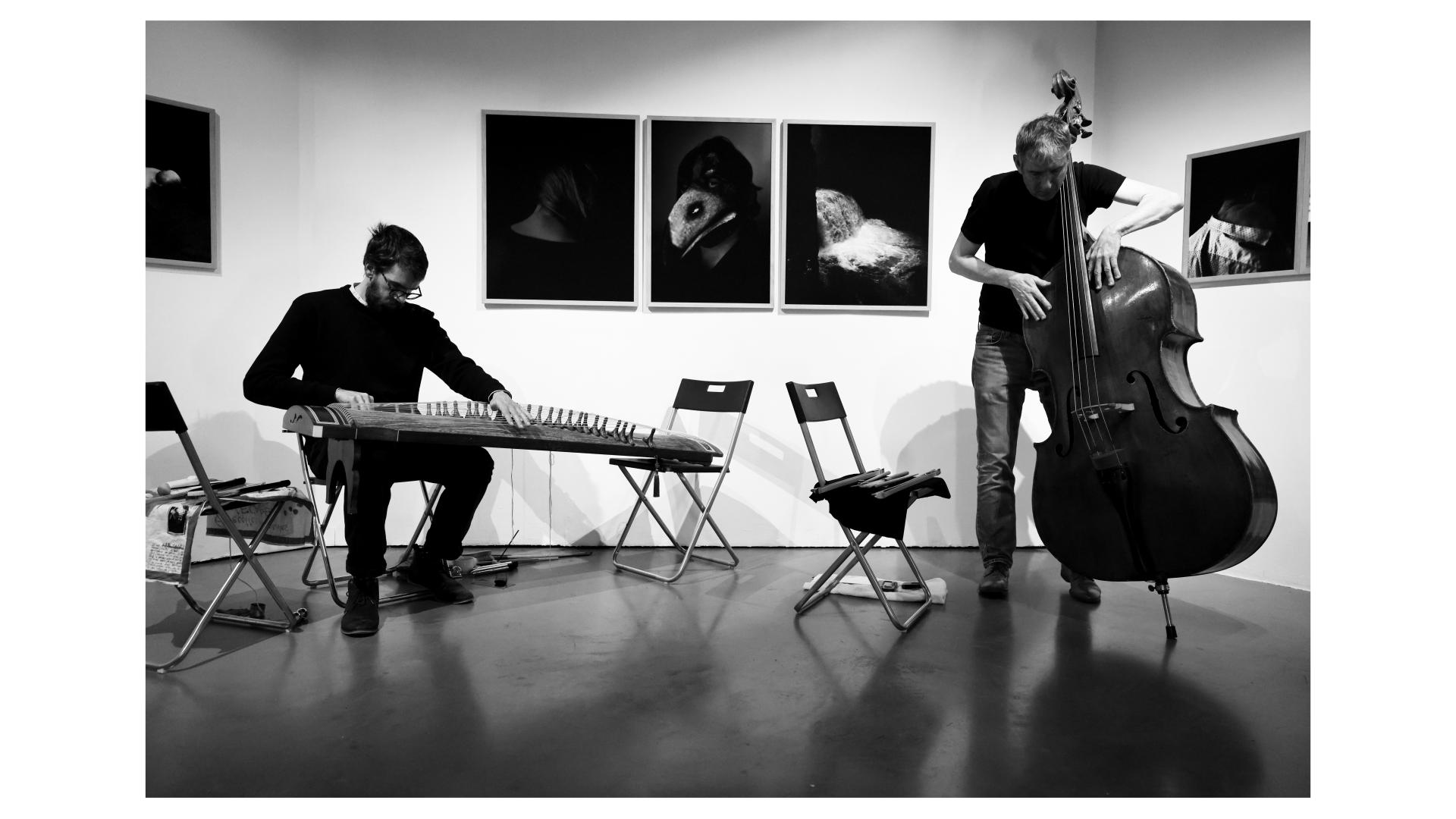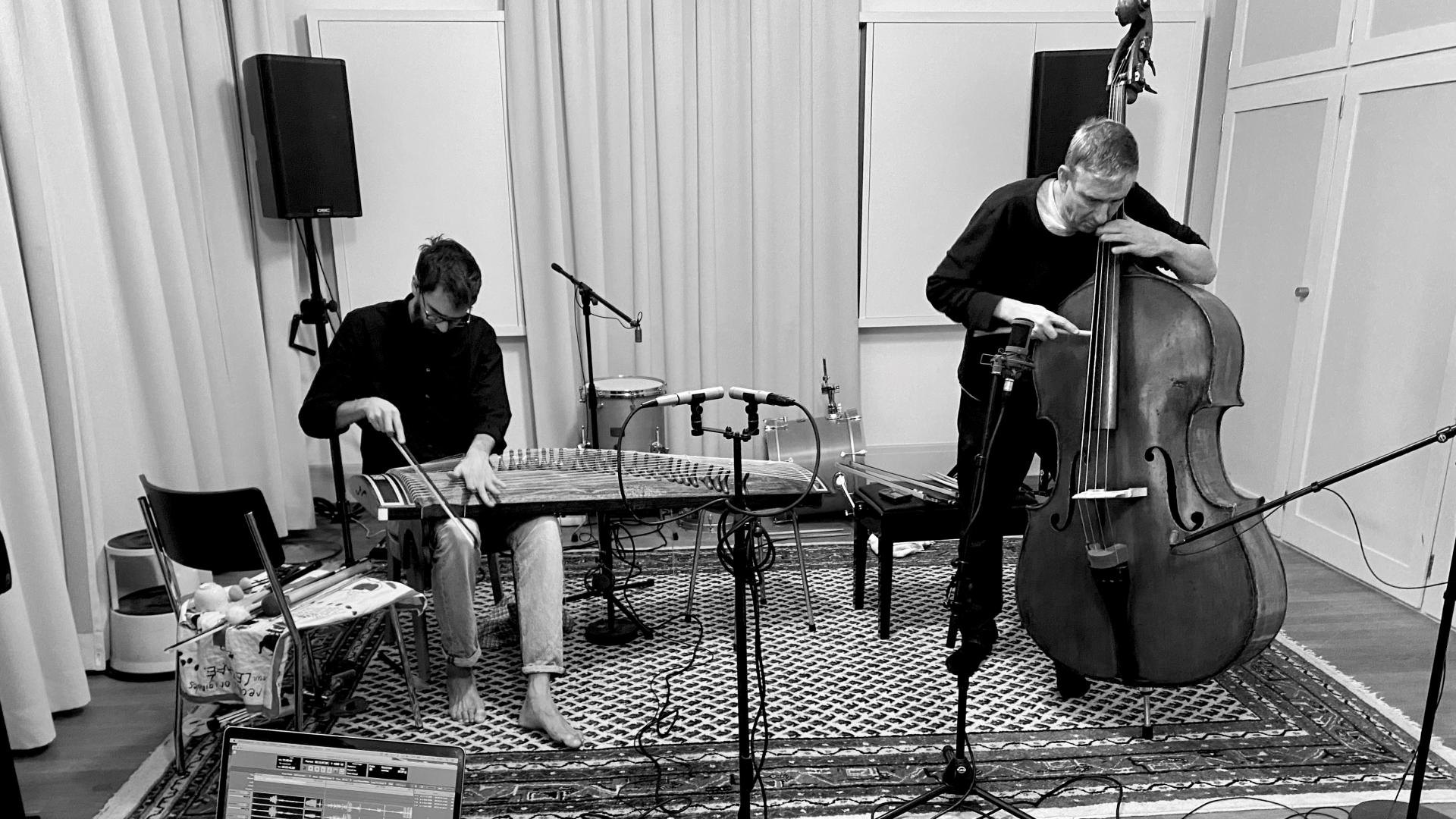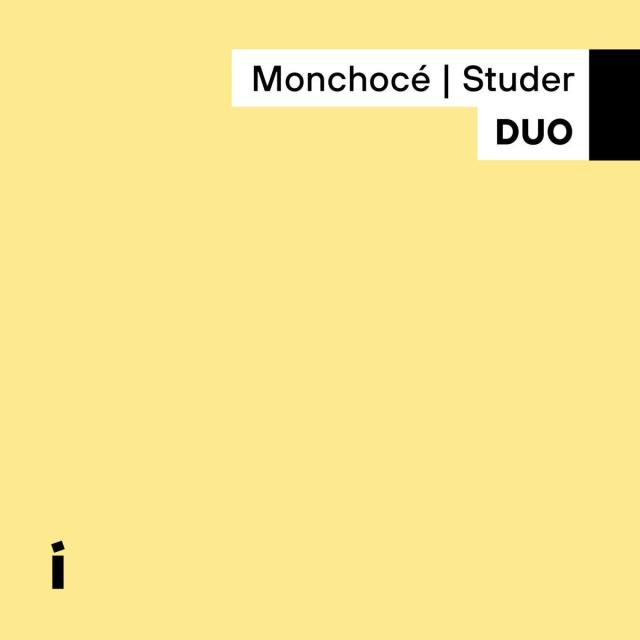Studer Monchocé
Daniel Studer & Sylvain Monchocé
An epiphany of improvised dialogue.
Audios
"In free improvisation creative acts are the result of a series of implications that concern the personal sphere of each musician. Free improvisation is a communicative state based on previous skills, intuitions and openness to dialogue, a practice capable of avoiding that terrible questioning that afflicts written music, that is, considering whether it is a language with a stable grammar: given that one does not improvise from nothing, free improvisation is an almost therapeutic place, with expressions that meet on the basis of a tactile relationship.
Sylvain Monchocé and Daniel Studer seem to thrive in improvisational dialogue and a few months agothey published DUO for Impakt R., 7 improvisations between gayageum, a traditional instrument of Korean origin and the double bass. We have already spoken about Studer several times on these pages(1), while this is the first time I mention Monchocé, a French multi-instrumentalist who also plays the saxophone and flute very well with many extended techniques, sometimes even combining them with the gayageum in the same performance. The first difference we perceive with respect to the normal world of improvised duets is the gayageum/double bass combination: Monchocé plays an instrument with a different understanding than a traditional Korean musician, even though he studied that tradition, because he realized that it is useful to explore the instrument in other ways; I had never heard a gayageum/double bass combination in free improvisation before and Sylvain adopts an approach with a strong preponderance of extended techniques, all implemented during the performance: he caresses the strings, plucks them in various ways in some places or uses objects to deal with them, uses a bow to probe the strings near the frame of the instrument, rubs the strings with a thread, etc.; there is almost no space for oriental technical conventions, those that we have come to know in musical literature thanks to the harmonic pizzicati that presume an idiom. It is clear that in the improvisational dialogue there are common objectives, in this case they are those explicitly declared on the ‘materials’, the ‘forms’ and the ‘time’: Monchocé and Studer set up a flexible discourse working on the strings, stylistically elusive, but endowed with an enviable communicative capacity. Both musicians play on instruments with a long strings and both use similar extended preparations/techniques (arco, pizzicato, sticks, splited strings, etc.). This ensures acoherence in the basic structure of the sound.
First Dialog is inhibitory, a meeting in an immaculate area between the timbres obtained from the gayageum and the depth of the harmonic resonances of the double bass; a chemistry on the non-harmonic recycling of some parts of the instruments is instead the domain of Second Dialog; in Fourth Dialog, the strange communication sees Studer move like a sloth while Monchocé works for a percussive and quarrel some connection; Fifth Dialog wedges itself between screeching strings, rustling, and a mysterious sound; a slightly more conventional pizzicato frames the Sixth Dialog, where it is possible to make distinctions between the timbres (2); an indecipherable work of craftsmanship comes out instead from the conclusive Seventh Dialog, where we also find a circumstantial island to catch our breath. This duo is remarkable! It is truly difficult to find such a beautiful realization of intent around, it is an epiphany of improvised dialogue."
— Ettore Garzia, Percorsi Musicali, 2025
Daniel Studer: double bass
Sylvain Monchocé: gayageum



